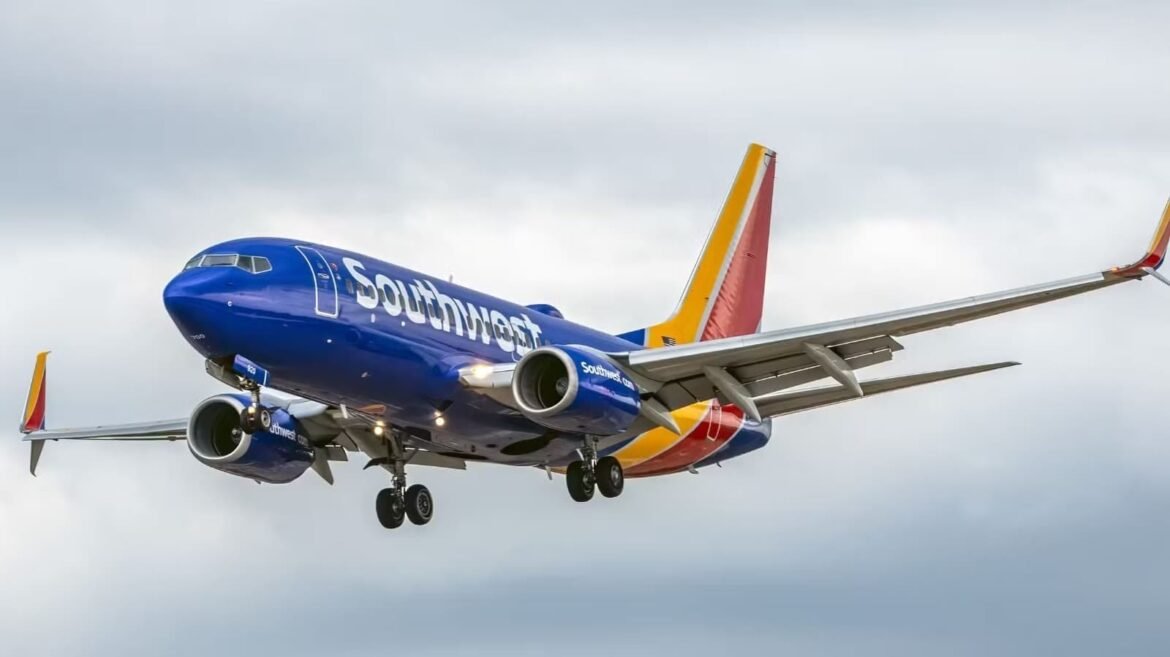1.2K
Southwest Airlines Flight WN 1496, operated by a Boeing 737‑700, executed a sudden and dramatic descent this morning—dropping from approximately 14,100 ft to 13,625 ft—after receiving mid‑air collision warnings shortly after departing Hollywood Burbank Airport (BUR) en route to Las Vegas (LAS).
🚨 Incident Summary
- Around six minutes into flight, pilots responded to two TCAS (Traffic Collision Avoidance System) alerts—first climbing, then rapidly descending—to maintain separation from a nearby aircraft, later identified as a Hawker Hunter Mk. 58 fighter jet registered N335AX.
- The fighter jet had crossed within two miles laterally and a few hundred feet vertically of the Southwest aircraft at similar altitude, triggering the evasive maneuver .
- Passengers described a terrifying “free‑fall” experience—several unbelted travelers were momentarily airborne and struck the ceiling, while others panicked in the cabin. Comedian Jimmy Dore, aboard the flight, said “plenty of people flew out of their seats & bumped heads on ceiling” as the crew dived aggressively to avoid collision
- Two flight attendants were injured and treated upon landing in Las Vegas. No passengers were reported injured .
- Despite the turbulence, the flight continued safely and landed in Las Vegas without further incident. Southwest confirmed that “the crew responded to two onboard traffic alerts” and is cooperating with the FAA investigation .
🧠 Technical & Operational Insights
- The TCAS II system aboard the aircraft issued resolution advisories to climb and then descend, ensuring vertical separation from the fighter jet. These systems operate independently of ground ATC commands but must be followed without hesitation when triggered .
- Flight tracking and radar data pinpointed the other aircraft as a Hawker Hunter Mk. 58, operated by a British defense contractor. Preliminary reporting shows coordination breakdown between aircraft and control may have brought them dangerously close
- Southwest’s rapid crew response mitigated what could otherwise have been a catastrophic collision. The aircraft’s compliance with TCAS commands prevented escalation of the incident
⚠️ Broader Significance & Context
- The warning and evasive action reflect a heightened sensitivity to near-miss risk in U.S. airspace, especially in the aftermath of the January Potomac River mid‑air collision that claimed 67 lives
- This incident is the fourth reported near-collision with military aircraft in U.S. commercial airliners since March, including a SkyWest ERJ-175 avoiding a B‑52 bomber over North Dakota the week prior
- Safety observers have pointed to systemic gaps in communication and airspace deconfliction between military and civilian operations, suggesting that TCAS interventions should serve as a final safety net, not a routine necessity

